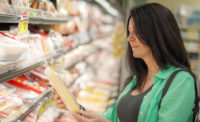Chicago-based NPD Group released its 2018 predictions for the food and beverage industry.
Restaurants continued to struggle with flat-to-declining traffic, and retailers faced stalled growth. Amazon made a big entry to the food world with its purchase of Whole Foods, and meal delivery kits took new steps with Albertson’s acquisition of Plated. These new realities reflect consumers’ changing demands that will force marketers to re-align how they remain relevant. Here are a few changes the industry can expect to experience in the New Year.
Retailers will change to bring in the experiential consumer. There is a movement all across retail where consumers are looking for greater experiences with their purchases. This is evidenced by a shift in personal consumer expenditures toward areas like travel and related categories, while sales of material objects haven’t fared as well. Food retailers aren’t immune to this, and will need to rethink their purpose for being among consumers. It’s no longer enough to provide a purely transactional relationship. Retailers will need to examine if programs such as cooking classes, in-store bars and grocerants, for example, will suit customers’ needs by bridging products with experiences to make a trip to their store unique.
Health is about wellness, balance and authenticity. Over the last decade, the industry witnessed consumers moving away from the center of the store and more toward the perimeter, where fresh items are found. Nearly two-thirds of consumers say fresh and clean eating is synonymous with healthy eating. And, since everyone under age 40 is consuming more fresh foods than their cohorts did in the last decade, this isn’t just a fad – it’s a generational shift. Packaged goods makers obviously can’t become fresh, but they can win in this environment. It requires a new look at ingredients to see if reformulation is possible to remove preservatives and other artificial ingredients.
The industry is also seeing consumers shift their focus to wellness and well-being; food is a means to that end. Good health and healthy behaviors can include a sensible indulgence as a reward for good behavior. Authenticity is critical here – consumers seek real and natural products, even with sweets. Consumers know sugar isn’t the healthiest ingredient, but when it’s time for a sweet indulgence, it’s best to be the real thing.
Convenience is shifting toward making fresh easier to prepare. Since consumers rely on fresh foods more often, the industry needs to rethink the meaning of convenience. For decades, convenience was built into the foods. Frozen entrées that required the touch of a microwave oven’s button were the ultimate form of convenience, but now convenience is shifting toward appliances, tools and services that assist with fresh-food preparation. This is especially true given consumers are not dedicating more time to prepare these fresh items, which inherently require more time. Other areas along the Path to Consumption are where consumers seek to save time. Online grocers and fresh delivery meal kits are gaining steam each year. The top reasons consumers use these services center around their time-saving aspects, such as not having to wait in lines or travel to the store. Meal kits go a step further solving the age-old question, “What’s for dinner?”
Culturally-based eating patterns aren’t the fastest to change, but today’s culture is being rapidly influenced on many fronts. Whether it’s new technologies, international influences or economics, all are conspiring to change the way consumers think and act.

